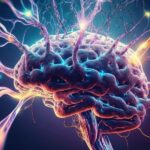Visual perception is a complex and fascinating aspect of human cognition, with countless factors influencing the way we perceive and interpret the images and objects around us.
One particularly captivating phenomenon is the ability of some individuals to discern hidden images or patterns within seemingly ordinary pictures – a skill that only a small percentage of the population possesses.
In this in-depth exploration of visual perception and hidden images, we will delve into the science behind this fascinating ability, the various factors that influence our ability to see such images, and the implications of this unique phenomenon.
Are you among the select few who can unlock the secrets hidden within this picture?
Read on to find out!
The Science Behind Visual Perception and Hidden Images
Our understanding of visual perception and the ability to decipher hidden images begins with a journey into the realms of neuroscience and psychology.
The human brain is an incredibly complex organ, responsible for processing vast amounts of information every second. One of the most important aspects of our cognitive function is our ability to process and interpret visual information. This process relies on a complex interplay between the eyes, which act as biological cameras, capturing light and converting it into electrical signals, and the brain, which processes these signals into the images we perceive.
At the core of this process are specialized cells known as neurons, which are responsible for transmitting and processing information throughout the brain. In the context of visual perception, there is a specific group of neurons in the primary visual cortex that are tasked with processing visual information. These neurons, known as feature detectors, are able to recognize and respond to specific aspects of the visual environment, such as lines, angles, and colors.
One of the key factors that allows some people to decipher hidden images within a picture is their ability to recognize and process specific patterns and features within the image. This is largely due to the activity of these feature detectors, which can vary significantly between individuals. As a result, some people may possess a heightened ability to recognize and interpret specific features within an image, allowing them to see the hidden image or pattern that others may miss.
Factors Influencing Our Ability to See Hidden Images
The ability to perceive and interpret hidden images within a picture does not solely rely on the activity of feature detectors within the brain. There are numerous factors that can influence our ability to see hidden images, some of which are innate, while others can be developed or influenced over time.
- Genetics: The genetic makeup of an individual can play a significant role in determining their ability to see hidden images. Certain genes have been linked to variations in visual processing abilities, which may contribute to an individual’s ability to perceive and decipher hidden images.
- Experience and Training: As with many cognitive abilities, our ability to perceive and interpret hidden images can be influenced by experience and training. Individuals who have spent significant amounts of time engaging with visual puzzles, such as stereograms or optical illusions, may have developed a greater ability to recognize and process the specific features required to decipher hidden images.
- Attention and Focus: The ability to see hidden images within a picture is often dependent on an individual’s level of attention and focus. In many cases, the hidden image or pattern may only become apparent once the viewer has spent a considerable amount of time studying the image, allowing their brain to process and recognize the specific features required to reveal the hidden image.
- Visual Acuity: Lastly, an individual’s overall visual acuity – the clarity and sharpness of their vision – can play a role in their ability to see hidden images. Those with greater visual acuity may be better able to discern the subtle features and patterns required to unlock the hidden image within a picture.
Examples of Visual Challenges and Their Implications
Throughout history, there have been numerous examples of visual challenges and puzzles designed to test the limits of our visual perception and ability to decipher hidden images. These challenges can provide valuable insights into the complexity of human cognition and the myriad factors that influence our ability to perceive and interpret the world around us.
- Optical Illusions: Optical illusions are images that deceive the brain by appearing to be something that they are not or by creating a false sense of motion or depth. These illusions often rely on specific visual cues and patterns, which can be used to manipulate the viewer’s perception and reveal hidden images or features.
- Stereograms: Stereograms are images that contain hidden three-dimensional scenes or patterns that can only be perceived when the viewer’s eyes are focused in a specific way. These images often require the viewer to engage in a process known as divergent viewing, which involves relaxing the eyes and allowing them to focus on a point beyond the image itself. This process allows the brain to combine the slightly offset images within the stereogram, revealing the hidden three-dimensional scene.
- Ambiguous Images: Ambiguous images are pictures that can be perceived in multiple ways, with the viewer’s brain often switching between the different interpretations as it attempts to make sense of the image. These images often rely on the brain’s natural tendency to seek out familiar patterns and features, with the hidden image or alternate interpretation only becoming apparent once the viewer recognizes the specific cues within the image.
- Camouflage Art: Camouflage art is a form of visual challenge in which objects or scenes are hidden within an image by blending them seamlessly with the surrounding environment. This technique is often used by artists to create visually engaging and thought-provoking pieces that challenge the viewer’s perceptions and force them to examine the image more closely in order to reveal the hidden objects or scenes.
The Psychological and Societal Impact of Visual Challenges
Visual challenges and the ability to decipher hidden images within a picture have long captivated the interest of both psychologists and the general public, with numerous studies exploring the cognitive processes and factors that underlie this unique phenomenon.
From a psychological perspective, the study of visual challenges and hidden images can provide valuable insights into the way our brains process and interpret visual information. This research has helped to advance our understanding of various aspects of cognition, such as pattern recognition, attention, and focus, which are all critical components of our ability to perceive and interpret the world around us.
Furthermore, the widespread popularity of visual challenges and puzzles, such as the viral “Magic Eye” stereograms of the 1990s or the more recent “Dress” optical illusion, highlights the intriguing nature of these phenomena and their ability to capture the collective imagination. These challenges not only provide a source of entertainment and mental stimulation but also serve as a reminder of the incredible complexity of the human brain and the myriad factors that influence our perception of the world around us.
From a societal standpoint, visual challenges and the ability to discern hidden images within a picture can also have important implications in areas such as education, art, and advertising. For example, educators can use visual challenges and puzzles as a means of fostering critical thinking, problem-solving, and pattern recognition skills among students. In the realm of art, artists can employ visual challenges and hidden images as a way to engage viewers and provoke thoughtful discussions about perception and reality. Finally, advertisers can utilize visual challenges and hidden images as a means of capturing the attention of consumers and conveying complex messages or ideas in a captivating and memorable way.
In conclusion, the ability to perceive and decipher hidden images within a picture is a fascinating and complex aspect of human cognition, with numerous factors influencing our ability to unlock the secrets hidden within these images. By exploring the science behind visual perception, the factors that influence our ability to see hidden images, and the various examples and implications of visual challenges, we are able to gain a deeper appreciation for the incredible complexity of the human brain and the way it processes and interprets the world around us. So, are you among the select few who can reveal the hidden image within this picture? Regardless of the outcome, this exploration of visual perception serves as a reminder of the incredible cognitive abilities that we all possess and the countless factors that shape our perception of the world around us.




